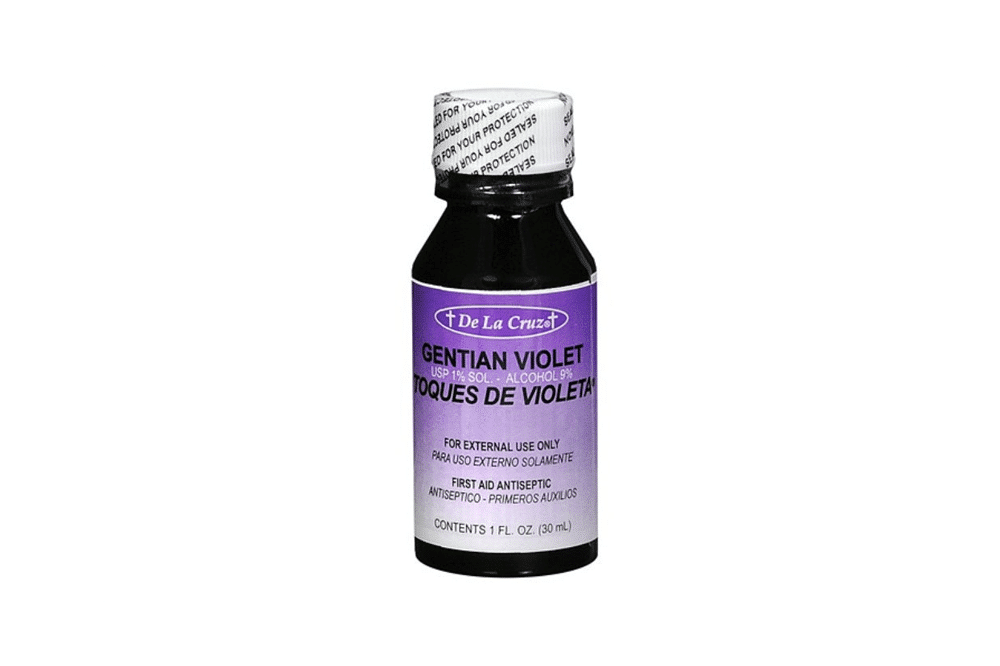In June 2019 Health Canada completed a safety review of products for human and animal use that contain gentian violet. Health Canada ultimately deciding that gentian violet is a carcinogen with no safe limit found.
The advice from Health Canada is to stop using products containing gentian violet. Canada follows Australia’s stated position, which is that gentian violet should not be used on human skin or on animals that we eat.
My Vagina’s position on using gentian violet vaginally
My Vagina is providing a warning for all treatment suggestions using gentian violet for vaginal infections. If you are currently using gentian violet and reading this for the first time, don’t panic.
There is no evidence that humans will develop cancer from using gentian violet vaginally in the short-term. However, following Canada and Australia’s lead, we can no longer recommend using gentian violet vaginally or on the skin.
We do not believe there is an urgent cancer risk associated with gentian violet, but these recommendations must be taken seriously. Cessation of vaginal use of gentian violet for bacterial vaginosis, aerobic vaginitis or yeast infections is recommended.
If you are using gentian violet as a vaginal treatment, we advise that you read all the relevant information and assess your use of gentian violet.
Remember: don’t panic! It is not an urgent health emergency, but a preventative measure based on unknowns. Better to be safe than sorry.
From where does this recommendation on gentian violet come?
The Canadian position and information on gentian violet come from a 2018 World Health Organisation (WHO) recommendation regarding vet drug residues in foods.
The review covers gentian violet, a non-antibiotic antiseptic often used in vet care for animals. The recommendations are in terms of establishing a safe level of gentian violet used in animals that we eat. The WHO could not confirm a safe level, and thus, the recommendation has been to remove this antiseptic dye from use in animals altogether.
The Canadian Government has taken the extra step of removing these products from the retail market in Canada.
The Australian Government has completed its review into gentian violet and related dyes using the same information from the WHO. Australia has also banned products for use on human skin that contain gentian violet.
Evidence on the Carcinogenicity of Gentian Violet (PDF) by the Reproductive and Cancer Hazard Assessment Branch, Office of Environmental Health Hazard Assessment, California Environmental Protection Agency
Don’t worry; you are not about to develop vagina cancer!
Gentian violet has been used for many reasons, including in babies’ mouths to treat oral yeast infections, and in surgical wounds and vaginas as an antiseptic.
Animals have gentian violet used on them in the same ways. The main issue is that we then eat the animals – thus ingesting gentian violet repeatedly over many years.
Cessation of gentian violet is a precautionary measure, so please do not panic. We know it sounds scary, but we advise a measured response.
What to do next
- Stop using gentian violet on humans or animals unless you’re happy with the risks
- Do not use gentian violet if you are pregnant or breastfeeding
- If you are concerned about your use of gentian violet, see your doctor to be examined and discuss it
- Dispose of your gentian violet products thoughtfully – you can return them to a pharmacy so they can dispose of them for you in special waste
- If you experience any irritation at all, don’t push through – stop using it
Read the full Health Canada announcement
__________
Excerpt from the Codex Alimentarius Commission: 02-06 July 2018
Maximum residue limits for veterinary drugs in animal products: gentian violet, amoxicillin, ampicillin, lufenuron and monepantel
AGREED – 3 July 2018
The Codex Alimentarius Commission has adopted maximum residue limits for a range of drugs sometimes used in food-producing animals.
The decision was based on an evaluation by the Joint FAO/WHO Expert Committee on Food Additives (JECFA).For the drug gentian violet, used as an antifungal veterinary drug, JECFA raised a health concern and could not define a safe exposure level.
In view of this conclusion, Codex found that there is no safe and acceptable level of residues of gentian violet or its metabolites in food to avoid risk to consumers.
For this reason, competent authorities should prevent residues of gentian violet in food.
Related links:
- Relevant Codex document (para 37 & Appendix II (gentian violet), paras 60, 64, 77 and 79 & Appendix IV(others))
- Joint FAO/WHO Expert Committee on Food Additives (JECFA)
__________





